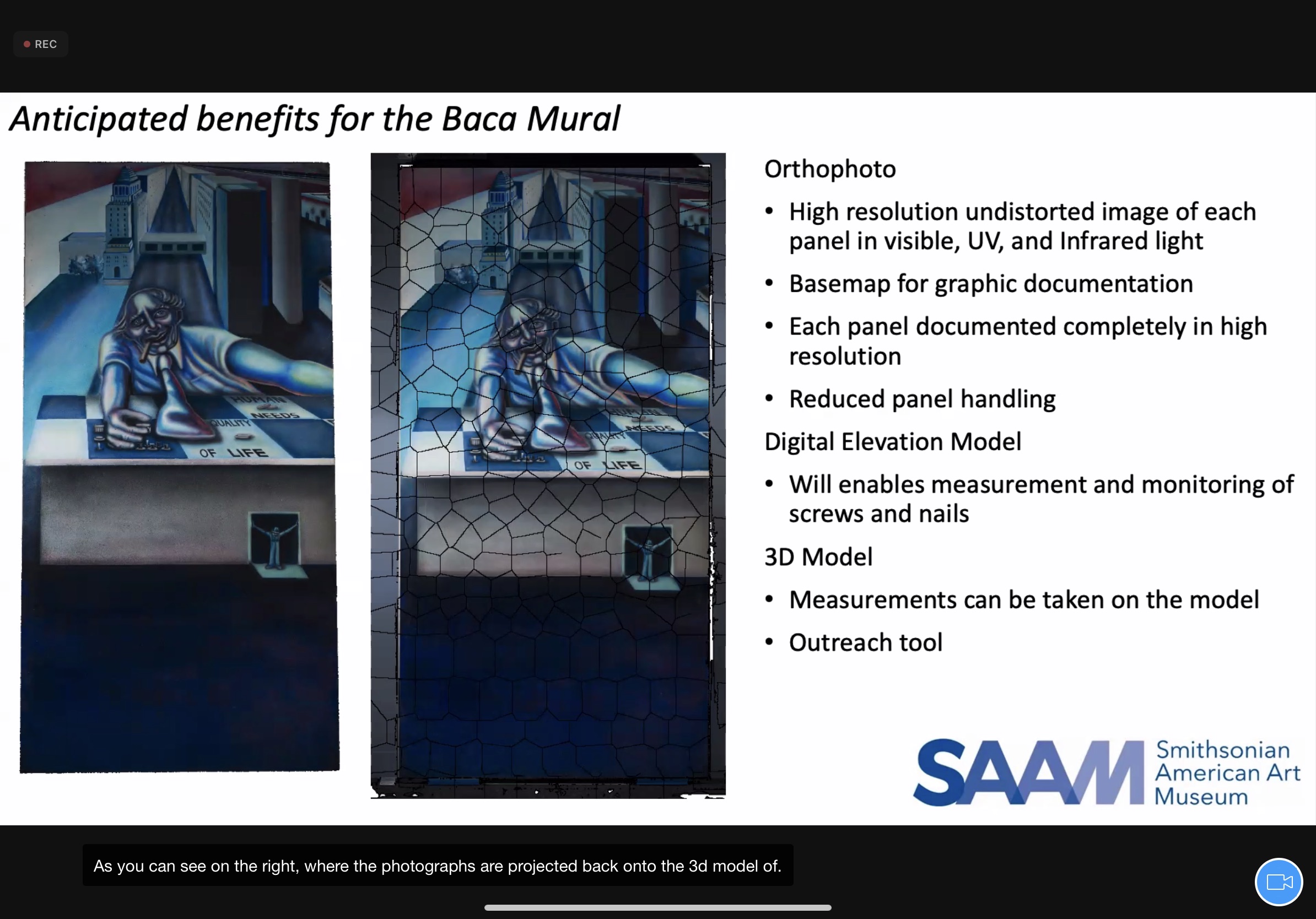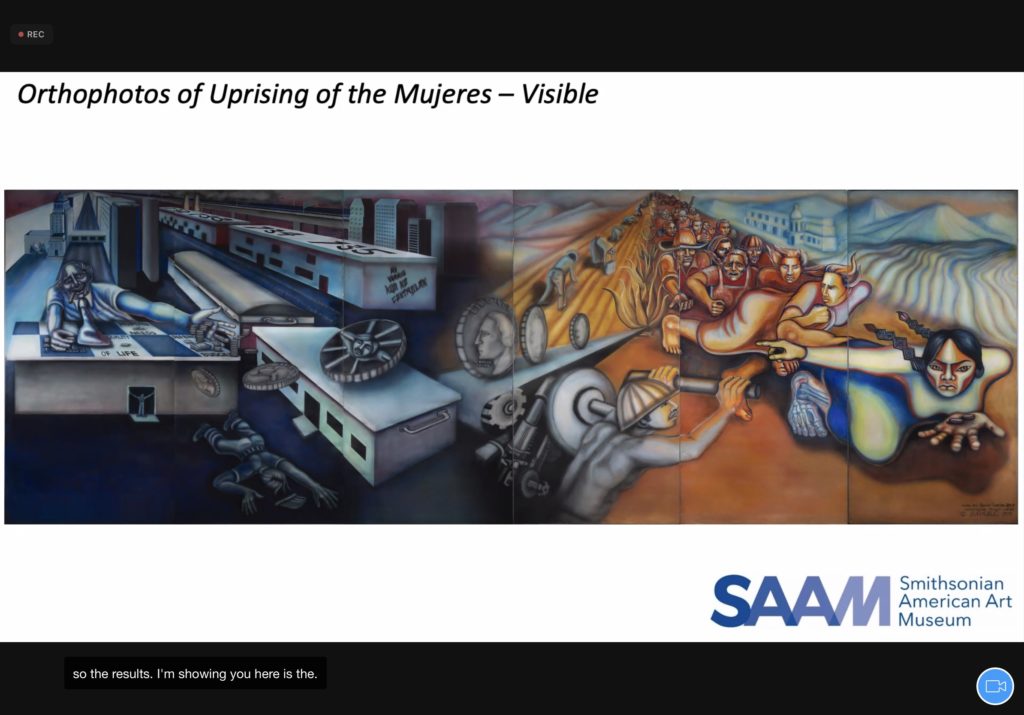Ring 2: Technical Imaging and Scientific Research
The Application of Multispectral Photogrammetry to the Conservation of a Portable Mural
Presented by Wendy Rose, 2021-2022 Latino Initiative Pool (LIP) Contract Associate Paintings Conservator at the Smithsonian American Art Museum (SAAM)

Wendy Rose, the first speaker of part 2 of the Washington Conservation Guild’s 3-ring Circus kicked off the night with her presentation. As a wall painting conservator working on contract at the SAAM, Wendy detailed the photographic documentation she has conducted to inform the treatment of Judy Baca’s portable mural, The Uprising of the Mujeres. The 8 feet by 24 feet mural, painted with acrylic emulsion on 6 masonite board panels—supported by plywood frames, nails and screws—was accessioned by SAAM in 2019. It was created by Baca in 1979, as a response to sexist ideologies she encountered during a mural training workshop in Mexico. This mural depicts an indigenous woman leading male and female workers in an uprising against capitalist exploitation. The panels presented challenges to documentation. They were unwieldy in a normal easel imaging set up, and they were too large to capture in a single high resolution image that would accurately document damages. The panels could only be safely leaned up against a wall due to their fragile painted sides, which posed a risk of angle distortions and misalignment if multiple images were stitched together. Wendy has employed photogrammetry in that past, which has proved successful in documenting wall paintings with similar limitations.
Photogrammetry is an imaging technique which utilizes a series of overlapping images to generate 3D models. One of the benefits of employing this technique was the production of a high-resolution orthophoto. An orthophoto is a rectified “mosaic” image of the artwork that is projected back on the 3D model where all distortions are removed. The ortho images were captured for each panel with visible light, ultraviolet-induced luminescence, and reflected infrared radiation. With photogrammetry, a digital elevation model was also produced to allow measurement points to be taken relative to one another. This is especially useful for these panels in order to monitor any changes in the height of nails protruding through the surface of the panels. Lastly, a 3D model was produced to assist in taking measurements and to be used as a future outreach tool. To achieve this, the camera captured hundreds of overlapping images of the artwork from a meter away which resulted in a resolution measuring 0.1mm per pixel. Though the results of this imaging are invaluable for future treatment and evaluation, it required a significant amount of time for capture and processing, as well as space for digital storage. In visible light, the high resolution orthophotos captured details of craquelure, brush application, nails, screws, and other damages to the surface. The UV-induced luminescence orthophoto displayed details of a dripping coating and retouching by the artists where nails had pushed through the paint surface. Preparatory techniques such as charcoal sketchings, underdrawings and pouncing under the paint were visible in the reflected IR orthophoto. The digital elevation model was also used to identify planar distortions and bowing in the masonite boards. The cumulation of these 3D models and high-resolution images, made possible through photogrammetry, have allowed Wendy to take precise measurements and observations while completing condition assessments. It will also prove to be an invaluable documentation format which may assist in future outreach initiatives involving the mural.

Meeting summary by: Katya Zinsli, Graduate Intern in Objects Conservation at Smithsonian American Art Museum, SUNY Buffalo State College Class of 2022
Attendance: 59+ people (headcount was taken at beginning of talk)